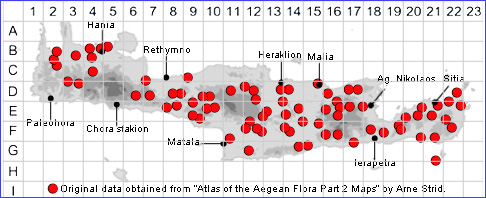
SPECIES DESCRIPTION
CREPIS VESICARIA
Family:- COMPOSITAE/Sect. LEPIDOSERIS
Common Names:- Beaked hawksbeard
Synonyms:- Crepis taraxacifolia subsp. vesicaria.
Meaning:- Crepis (Gr) A name used by Greek philosopher Theophrastus.
Vesicaria (L) Inflated, bladder-like.
General description:- Perennial, biennial or annual.
Stems:- 3-150 cm. usually much-branched.
Leaves:-
1) Pubescent or glabrous;
2) Basal, 10-35 x 2-8 cm, oblanceolate or sometimes almost spathulate or ovate,
obtuse to acute, sinuately or retrorsely denticulate, dentate or runcinate-
pinnatifid, pinnatisect or 2-pinnatisect, often lyrate, sometimes pectinate,
narrowed at base.
3) Lower cauline, like the basal or sessile.
4) Upper cauline, lanceolate to bract-like, auriculate-amplexicaul.
Flowers:-
1) Capitula many, often in a lax corymb.
2) Involucre 5-14 mm, more or less tomentose, often with glandular or
eglandular hairs.
3) Outer bracts (1/6-)1/4-1/3(-3/4) as long as the inner.
Fruit:-
1) Achenes brown or yellowish, fusiform, uniform or of 2 kinds, the
inner always beaked, c. 10 ribbed.
Key features:-
1) Cauline leaves larger and amplexicaul.
2) Involucre 7-14 mm.
3) Outer involucral bracts linear-lanceolate to ovate.
4) Achenes 3·5-9 mm.beak slender.
Habitat:- Seasonally damp meadows, olive groves, A scrubland vegetation and
ruderal habitats. 0-600 m. (-1100 m. in dolines).
Distribution:- Scattered throughout Greece Widespread in C & S Europe,
Mediterranean region, Anatolia to Crimea and Caucasia. Widespread and common
on Crete.
Flowering time:- Apr-June.
Photos by:- Steve Lenton
